When it comes to running a successful organization, health, safety, and environment (HSE) should never be an afterthought. Whether you’re managing a construction site, factory floor, or office building, a strong HSE strategy helps protect your team, reduce costs, and keep your business running smoothly.
But HSE isn’t just about compliance. It’s about creating a safety culture where everyone from top management to workers on the ground takes responsibility for their environment.
What Is HSE?
HSE stands for Health, Safety, and Environment. It covers policies, procedures, and best practices that help reduce accidents, promote well-being, and protect the planet.
- Risk Assessment and Hazard Identification
- Occupational Health and mental well-being
- Incident Reporting and Emergency Preparedness
- Environmental Protection (like waste control and pollution reduction)
Compliance with standards like ISO 45001 and ISO 14001
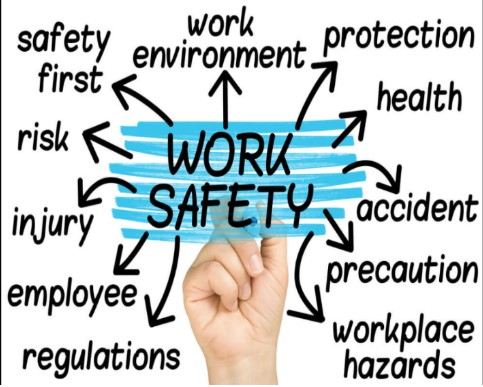
Why HSE Is Important for Your Business
Each year, countless employees experience injuries or health issues due to hazardous workplaces. These events are not only expensive, they are avoidable.
- Minimize incidents and idle time
- Enhance staff enthusiasm and involvement
- Reduced expenses for insurance and legal matters
- Enhance your standing with clients and regulators
Steps to Improve HSE in Your Workplace
- Start with a Safety Audit: Walk through your facility and identify hazards. Involve your team they often spot issues faster than management does.
- Develop a Clear HSE Policy: Write down your safety goals and communicate them often. Make sure everyone knows their role.
- Train Your Team: From using personal protective equipment (PPE) to responding to emergencies, regular training builds confidence and reduces mistakes.
- Track Your Progress: Use safety KPIs like near-miss reports, incident rates, and safety inspections to see what’s working and what’s not.
- Celebrate Wins: Did you go 90 days without an incident? Recognize your team’s effort! It builds positive habits and keeps safety top of mind.
HSE Is About People, Not Just Paperwork
At the heart of every good HSE plan is one thing: people. That means looking after not just physical safety but also mental health, stress management, and even work-life balance. Happy, healthy workers are more productive and less likely to get hurt.
Don’t forget the “E” in HSE. Responsible waste management, energy-saving practices, and eco-friendly policies help protect the planet—and show your stakeholders you care.
Safety isn’t a box to check. It’s a way of working.
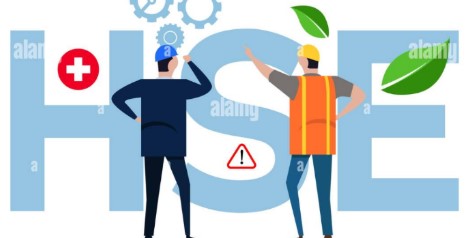
Blog 2: Why Every Workplace Needs an Effective HSE Management System
SEO Keywords: HSE management system, workplace safety, ISO 45001, risk management, compliance, occupational safety, safety audit
In today’s fast-paced work environments, the need for a reliable and proactive HSE (Health, Safety & Environment) Management System has never been more critical. Whether you’re running a construction site, a manufacturing unit, or an office space, a structured HSE approach not only helps protect your employees but also strengthens your organization’s reputation and compliance profile.
What Is an HSE Management System?
An HSE Management System is a set of policies, processes, procedures, and tools that organizations use to ensure workplace health and safety, control environmental risks, and achieve regulatory compliance. Many businesses align their HSE practices with ISO 45001 (Occupational Health and Safety Management Systems) and ISO 14001 (Environmental Management Systems) to ensure global standards.
Key Benefits of Implementing an HSE Management System
- Legal and Regulatory Compliance
Stay ahead of labor and environmental regulations. A robust system ensures that your company complies with local safety laws and international safety standards. - Fewer Accidents and Injuries
Systematic risk assessments, hazard identification, and corrective actions lead to fewer workplace incidents and injuries. - Better Employee Morale and Retention
When employees feel safe, they’re more productive, loyal, and engaged. Safety shows that the company cares. - Improved Efficiency and Productivity
A structured HSE approach minimizes downtime due to accidents, equipment failure, or investigations. - Enhanced Reputation and Client Trust
Clients and investors trust companies that demonstrate a commitment to health, safety, and environmental sustainability.
How to Get Started
- Conduct a safety audit and identify gaps
- Set clear objectives and responsibilities
- Provide employee training and awareness sessions
- Monitor performance using safety KPIs
- Regularly review and improve the system
HSE is not a one-time setup it’s a culture that must be nurtured daily.
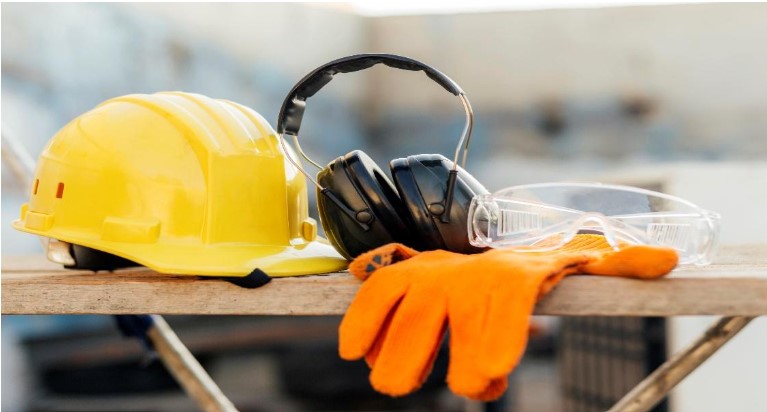
Blog 3: Building a Strong Safety Culture at Work – A Step-by-Step Guide
SEO Keywords: safety culture, workplace safety, behavior-based safety, HSE training, near-miss reporting, hazard prevention, leadership in safety
A well-documented safety policy means nothing without a solid safety culture behind it. A culture where employees actively look out for their own safety and that of their coworkers can significantly reduce incidents, improve morale, and boost productivity.
What Is a Safety Culture?
A safety culture refers to the shared values, beliefs, and behaviors that determine how safety is managed in the workplace. It’s about embedding safety into the DNA of your company not just as a policy but as a way of thinking.
Pillars of a Strong Safety Culture
- Leadership Commitment
Safety starts at the top. When leadership prioritizes safety in meetings, budgets, and day-to-day actions, employees follow suit. - Behavior-Based Safety (BBS)
Focus on understanding and reinforcing safe behaviors rather than simply punishing unsafe actions. Encourage personal responsibility. - Continuous HSE Training
Conduct regular toolbox talks, safety drills, and hands-on training sessions to keep safety knowledge fresh and practical. - Open Communication & Reporting
Create a system for reporting near-misses, unsafe behaviors, and hazards without fear of punishment. Transparency builds trust. - Recognition & Reward Programs
Acknowledge teams or individuals who demonstrate excellent safety practices. This reinforces positive behavior and motivates others.
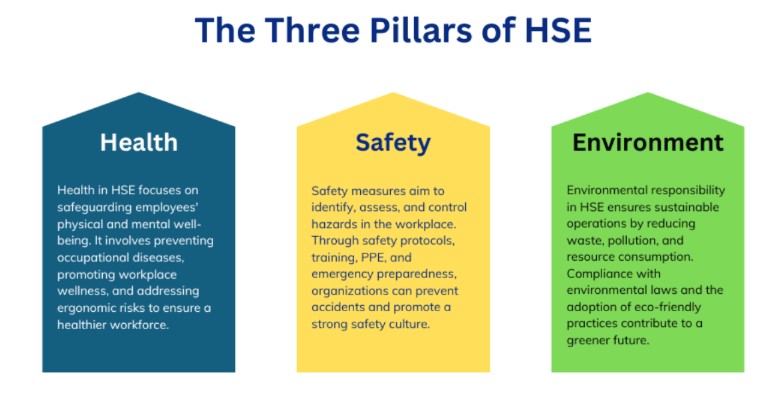
Measuring Progress
Use leading indicators like:
- Number of safety observations
- Training participation rates
- Near-miss reports
And lagging indicators like:
- Total Recordable Incident Rate (TRIR)
- Days Away, Restricted or Transferred (DART)
- Lost Time Injuries (LTI)
Together, these metrics show how well your safety culture is growing.
Blog 4: Understanding Environmental Hazards in the Workplace
SEO Keywords: environmental hazards, HSE environment, workplace pollution, hazardous waste, chemical exposure, sustainability, environmental compliance
When we talk about HSE, the “E” Environment often gets overlooked. But managing environmental hazards is just as important as protecting people. From toxic waste to poor air quality, environmental risks can harm both the planet and your team’s health.
What Are Environmental Hazards?
Environmental hazards in the workplace are elements that pose a risk to people or the surrounding environment. These may include:
- Chemical spills and leaks
- Airborne pollutants (dust, smoke, fumes)
- Noise pollution from machinery
- Fire hazards due to poor waste handling
- Improper waste disposal
Common Industries Affected
- Manufacturing (chemical use, emissions)
- Construction (dust, asbestos, fuel leaks)
- Healthcare (hazardous medical waste)
- Mining & Oil (land and water pollution)
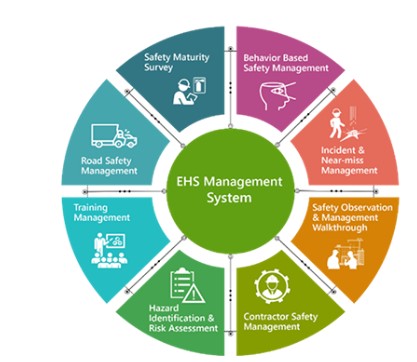
How to Reduce Environmental Hazards
- Conduct Environmental Risk Assessments
Analyze operations to identify and prioritize risks to air, water, and soil. - Implement a Waste Management Plan
Sort, recycle, and dispose of hazardous materials properly. Use color-coded bins and clear signage. - Provide Training on Spill Response and Disposal
Ensure staff knows how to handle accidents quickly and safely. - Use Eco-Friendly Alternatives
Switch to biodegradable or less toxic materials where possible. - Track and Report Environmental Impact
Regularly monitor emissions, waste, and resource use to stay compliant and improve practices.
Legal and Ethical Responsibility
Environmental regulations are tightening globally. Failing to comply can result in hefty fines, business shutdowns, and long-term damage to your brand. But beyond compliance, taking care of the environment is the right thing to do.
Blog 5: Building an ISO 45001-Compliant HSE Management System
SEO Keywords: HSE management system, ISO 45001, workplace safety, risk management, safety audit, compliance
Why Your Workplace Needs a Formal HSE System
An effective HSE (Health, Safety, and Environment) management system aligned with ISO 45001 provides a structured approach to managing safety risks and ensuring workplace safety. It not only minimizes workplace hazards but also ensures legal and regulatory compliance, helps improve operational efficiency, and fosters a culture of continuous improvement.
Organizations with an HSE system demonstrate commitment to employee well-being, risk management, and ethical business practices ultimately boosting employee trust and customer confidence.
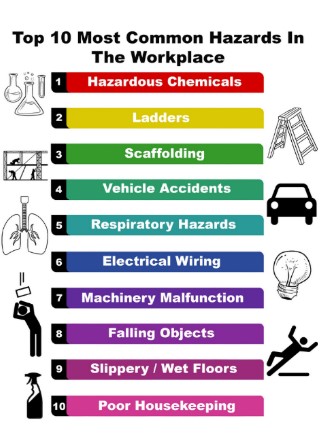
Core Steps to Design & Implement Your HSE System
- Conduct a Safety Audit
Begin with a full-scale safety audit to identify existing hazards, unsafe practices, and compliance gaps. This forms the foundation of risk assessment. - Develop a Management Policy
Draft a clear HSE policy in line with ISO 45001 that includes well-defined roles, responsibilities, and communication channels. - Train and Educate Employees
Roll out consistent training on workplace safety, risk mitigation, PPE use, and emergency procedures. Awareness is key to engagement. - Track KPIs and Indicators
Use leading indicators (e.g., safety observations, near-miss reports) and lagging indicators (e.g., Total Recordable Incident Rate – TRIR) to track performance and guide decisions. - Review and Improve Regularly
Use internal audits and performance reviews to refine policies, close compliance gaps, and ensure continuous system evolution.
Key Benefits You Can Expect
- Regulatory Compliance: Avoid fines and meet local and international standards.
- Fewer Incidents: Reduced injuries, illnesses, and production delays.
- Improved Morale: Employees feel safer, more valued, and motivated.
- Better Reputation: Clients and stakeholders recognize commitment to safety and sustainability.
Blog 6: Cultivating a Behavior-Based Safety Culture
SEO Keywords: safety culture, behavior-based safety, HSE training, near-miss reporting, leadership in safety
What Is Safety Culture, Really?
Safety culture is more than protocols—it’s the shared values, beliefs, and behaviors that shape how safety is approached across an organization. In a strong safety culture, leaders set the tone, employees take ownership, and safety becomes a daily mindset.
Key Elements That Shape a Robust Safety Culture
- Leadership Commitment
Executives and supervisors must lead by example, prioritize safety in decisions, and support safety initiatives visibly. - Behavior-Based Safety (BBS)
Implement BBS programs that involve real-time behavior observations, constructive feedback, and reinforcement of positive practices. - Toolbox Talks and Scenario Training
Regular short talks and drills help reinforce safety knowledge and prepare teams for emergencies. - Transparent Near-Miss Reporting
Create a blame-free environment where workers can report hazards and near-misses openly.
Recognition and Rewards
Appreciate employees who contribute to safer work environments to encourage continued engagement
Measuring Your Culture’s Health
leading Indicators:
- Participation in safety meetings
- Number of observations submitted Training completion rates
Lagging Indicators:
Lost-Time Injuries (LTIs)Incident frequency Closure rate of corrective actions Tracking both gives a clear picture of cultural maturity and safety momentum
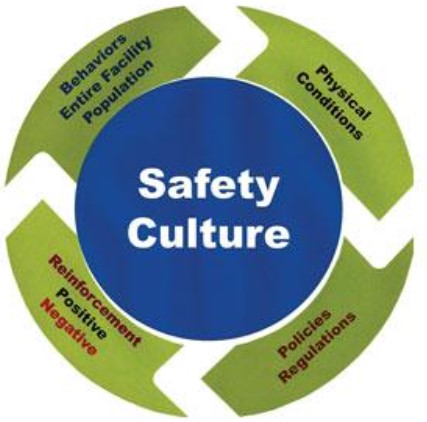
Blog 7: Managing Environmental Hazards at Work
SEO Keywords: environmental hazards, HSE environment, workplace pollution, hazardous waste, sustainability, spill response
Understanding Environmental Hazards in the Workplace
Environmental hazards in the workplace can significantly impact not only employee health but also the surrounding ecosystem. These hazards include chemical exposures, air pollutants, improper waste disposal, and noise pollution all of which can result in legal liabilities and reputational damage.
Common Workplace Environmental Hazards
- Hazardous Substances: Spills, leaks, or storage issues involving chemicals.
- Poor Air Quality: Dust, fumes, and emissions from machinery or processes.
- Noise Pollution: Prolonged exposure to loud equipment.
- Inadequate Waste Disposal: Improper segregation of hazardous and non-hazardous waste.
- Fire Risk: Flammable materials stored improperly or without controls.
Effective Environmental Risk Control Strategies
- Environmental Risk Assessment
Identify and prioritize risks using structured methods such as the HAZOP or HIRA framework. - Establish a Waste Management Program
Develop processes for recycling, safe disposal, and hazardous waste management. - Spill Response & Chemical Handling Training
Equip staff with the knowledge and tools to handle leaks, chemical contact, and emergency responses. - Sustainable Alternatives
Shift towards energy-efficient equipment, low-emission processes, and eco-friendly materials. - Monitoring & Continuous Improvement
Track metrics like emissions, energy use, and waste volumes. Set improvement targets annually.
Blog 8: Launching an ISO Aligned HSE Management System
SEO Keywords: HSE management system, ISO 45001, ISO 14001, workplace safety, compliance, occupational health
Integrating ISO 45001 & ISO 14001 for Comprehensive Safety and Environmental Management
An HSE management system that aligns with ISO 45001 (occupational safety) and ISO 14001 (environmental management) provides a dual advantage ensuring both worker protection and sustainability. This framework helps organizations operate safely, responsibly, and in compliance with international regulations.
Steps to Launch an ISO-Aligned HSE System
- Initial Risk Assessment & Safety Audit
Understand your current risk landscape and compliance status before implementation. - Define Policies and Objectives
Establish integrated HSE policies that include safety, health, and environmental goals. - Provide Practical Training
Focus on PPE use, hazard recognition, reporting procedures, and emergency response. - Set Up Indicators
- Leading Indicators: Number of inspections, safety observations, BBS reports
- Lagging Indicators: TRIR, frequency of workplace injuries, lost-time days
- Management Review & Continuous Improvement
Use a structured review cycle to audit performance and implement improvements regularly.
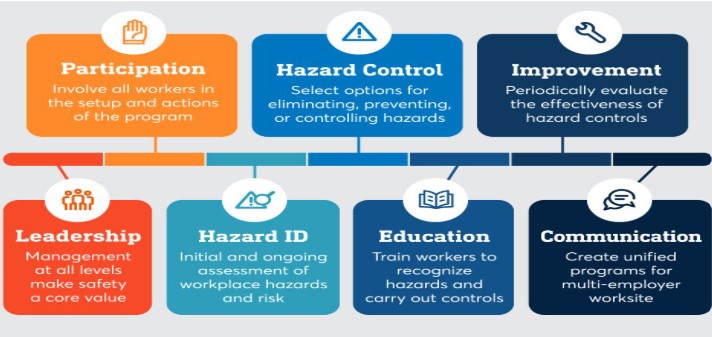
Why This Approach Works
- Reduced Workplace Incidents: Safer environments and fewer disruptions
- Improved Legal Compliance: Lower legal and financial risks
- Stronger Client Confidence: ISO certification builds stakeholder trust
- Operational Efficiency: Streamlined processes and fewer unplanned delay

